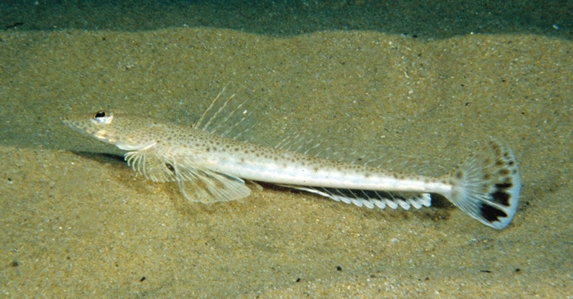General Description
Body slender, head flattened with two strong spines at the corner of the gill cover, the lower much longer than the upper. Sand-brown with 2-3 indistinct bands and peppered with small light to dark spots above, pale below; tail with brown blotches on the upper part and a large dark blotch broken with white fin rays on the lower part. To 55 cm.
Biology
These flatheads are fished commercially, and very popular with recreational anglers. Their fin spines are venomous.
Habitat
Sandy, muddy or shelly bottoms in shallow coastal bays and along the coast, in depths of 0-100 m.
Soft substrates
Distribution guide
Southern Australia.
Species Group
Depth
Shore (0-1 m)
Shallow (1-30 m)
Deep ( > 30 m)
Water Column
Max Size
55 cm
Diet
Carnivore
Harmful
Venomous spines can inflict mild to severe pain.
Commercial Species
Yes
Global Dispersal
Native to Australia
Identify
Conservation Status
- DSE Advisory List : Not listed
- EPBC Act 1999 : Not listed
- IUCN Red List : Not listed






